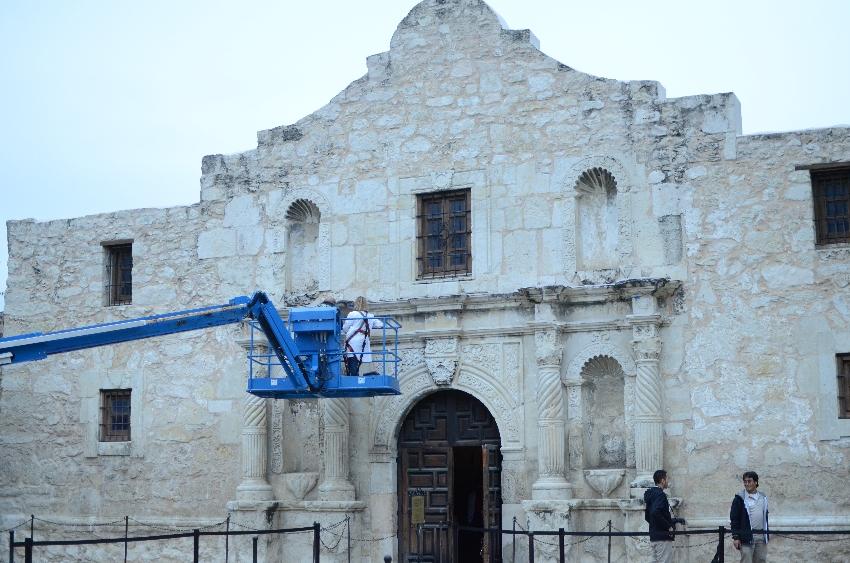
The first time I laid eyes upon the Alamo in San Antonio my freshman year, I found it hard to understand why I was supposed to “remember it.” The small, squat mission-turned-fort doesn’t make for a particularly impressive national landmark; if it weren’t for the long line of eager tourists waiting outside and the massive sign proclaiming its identity, it’d be all too easy to mistake the Alamo for an old, neglected and unremarkable Catholic church.
It was all too easy for me to brush the experience aside as a thoroughly uninteresting venture into an over-hyped and out-played chunk of American history. My immediate inclination was to look down my self-righteous nose at the crumbling bricks of the Alamo and its worn-out purpose as a gimmicky way of making money off of gullible tourists.
Four extra years of wisdom and an AP U.S. class later, however, I had the chance to visit the Alamo again when my journalism staff traveled 15 hours to San Antonio for the semi-annual National Scholastic Press Association high school journalism convention. And upon walking through the streets I once knew, the purpose and power of the Alamo really hit me with the full force of a runaway train.
People died at the Alamo. More importantly than that, people died for the Alamo.
It’s not something any of us usually think about: the long-gone lives connected to the architecture and landscape around us, the questions about why anyone did what they did; and the fact that we’ll almost certainly never know the answers. For most teens, there isn’t any reason for us in our day-to-day lives to take stock in the lingering traces of our ancestors’ actions that exist all around us. That knowledge is both acknowledged and feared at a subconscious level.
But for me, when I visited a collapsing, tiny compound whose true significance had been lost to time, it woke me into awareness. In the middle of a thriving city, I was stunned at how when I was younger, I was able to oversee the long-forgotten loss of life when I visited the final resting place of the once living, breathing men and women like you and me who seemed to have died for absolutely nothing.
Although at the time, according to my past U.S. history textbook by George Brown Tindall, people in the Alamo knew they were fighting for an almost hopeless case, on Feb. 23, 1836, they made their final stand against the Mexican army. After a 13 day siege, all 150 inhabitants were dead. In order to protect what they held dear – the territory Texas – people were willing to sacrifice their lives. And as a child, I had disdainfully looked upon that sacrifice without fully understanding the meaning of a life.
But there’s a reason that the Alamo is preserved today; because, by random chance, U.S. citizens remember the desperate, scattered hopes and dreams of its last inhabitants. The fact that the outcome of the battle at the Alamo immortalizes the inhabitants’ deaths isn’t what makes the venerable mission significant. What’s significant is the fact that regardless of how well they understood all the history and politics roiling around them, the people who fought at the Alamo cared enough about their cause to die for it horribly, holed up in the ruins of a church with no hope of escape.
And on a simple, breezy, fall day, taking a trip along the streets I once bounded through as a kid eager for only the visible entertainment, I realized the power of education, knowledge, understanding and, above all, caring. In one afternoon, I realized the life I am living does not necessarily belong to me, but the actions and sacrifices of those who came before us.
So after almost 200 years, the Alamo still stands. It’s a reminder, I suppose, of how much more we can make of life by caring. Perhaps that’s why we ought to remember the Alamo.
By Jake Alden
This opinion piece is labeled as such on the desktop version.






















































































Humera Lodhi • Nov 17, 2012 at 12:54 pm
Great article, well written, and good insight. I’ve been to the Alamo once, as well, when I was younger, and I felt like you did at the beginning. All these years I’ve been thinking of the Alamo as rather insignificant, and kind of lame. However, this article really brought a new perspective to light. Good job!